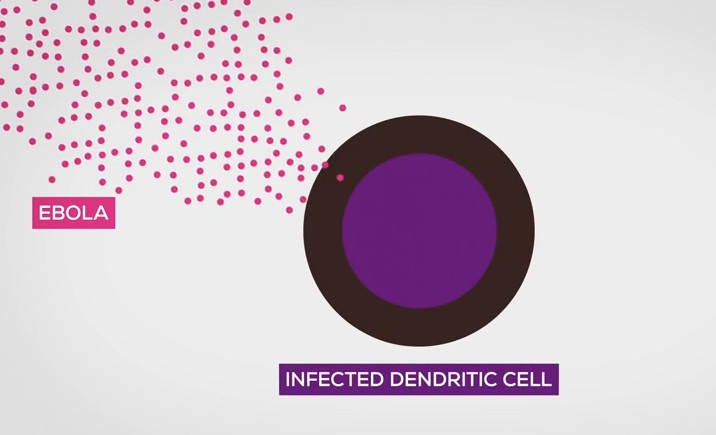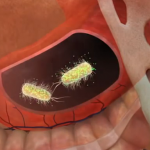Ebola is a virus which upon infection causes hemorrhagic fevers, i.e., diseases characterized by hemorrhage or excessive bleeding, organ failure, and fatalities in several cases. The virus is native to the African continent which has witness periodic outbreaks of the illness over many decades.
The Ebola virus reside in animals; it can be transmitted to humans from infected animals. After transfer to humans, the virus may migrate from one individual to another via contact with contaminated needles or bodily fluids.
The treatment involves supportive care and management of associated health complications. Vaccines are currently being developed for the life-threatening illness. In the US, Ebola infection and its spread is tested, diagnosed, and monitored by the CDC/Centers for Disease Control and Prevention and its varied laboratories.
Symptoms of Ebola virus infection
The signs and symptoms of Ebola virus infection usually commence suddenly in 5 to 10 days after getting infected. A few common early symptoms are listed below:
- Fever
- Weakness
- Muscle and joint muscle aches
- Severe headache
- Chills
With the passage of time, the symptoms progressively worsen. It may include:
- Reddened eyes
- Pain in stomach
- Diarrhea; it is possible for diarrhea to be bloody.
- Vomiting and nausea
- Elevated, bumpy, hemorrhagic rash
- Excess loss of weight
- Cough
- Pain in chest area
- Internal bleeding
- Bruising
- Bleeding, often from the eyes. Patients with severe Ebola infection in the last stages may also experience bleeding from other openings in the body such as the nose, ears, and rectum.
Most patients tend to eventual die due to Ebola virus hemorrhagic fever. The progression of the disease may be marked by the below listed health complications:
- Multiple organ failure
- Jaundice
- Excessive bleeding
- Delirium
- Coma
- Seizures
- Shock
Ebola virus directly hampers the ability of the immune system to defend the body. This is one of the main reasons for the high percentage of fatalities associated with the disease. Medical experts are however not aware of the reasons as to why some patients survive and others don’t.
Recovery from Ebola hemorrhagic fevers is slow. The virus may remain in the body for several weeks and strength and weight regain may occur in many months. Patients may also elicit:
- Sensory alterations or changes
- Hair loss
- Hepatitis or inflammation of liver
- Fatigue
- Weakness
- Headaches
- Inflammation of the testicles
- Ocular inflammation

Causes of Ebola illness
Ebola virus has been discovered to live in varied non-human primates, including African monkeys and chimps, etc. A milder Ebola virus strain has been found to occur in pigs and monkeys in the Philippines.
- Transmission of the Ebola virus from animals to humans: It is believed that humans can contract the Ebola virus via contact with the bodily fluids of an infected animal. Eating or butchering infected animals can also result in spread of the virus. For example, operations conducted by scientists on infected animals as part of the research were found to have contracted the virus.
- Transmission between humans: Ebola viral illness does not transfer via air. It also cannot transmit via normal contact, such as being in the vicinity of an infected individual. Unlike varied respiratory condition which can spread via contact with germs percolating in the air after a patient sneezes or coughs, Ebola virus only spreads via direct contact with the bodily fluids of an infected Ebola patient. Transmission of body fluids can occur via direct contact with infected blood, vomit, feces, saliva, tears, mucus, breast milk, semen, urine, and sweat. There is not much proof about the spread of Ebola via insect bites.
- Ebola viral infection tends to remain non-contagious till the time the patient experiences the symptoms. When a patient sneezes or coughs, and the mucus or saliva comes into direct contact with the nose, eyes, mouth, or a wound or open cut on the skin, then it is possible for Ebola virus to spread via these fluids.
- Family members are most vulnerable when they are caring for sick relatives, or are preparing their dead loved ones for burial. Medical professionals may also suffer from Ebola infection if they treat patients without using gloves, surgical masks, and other protective gear.
- Most medical centers in Africa tend to reuse the syringes and needles, due to economic causes, thereby helping the spread of the virus. The use of unsterilized and contaminated injection medical equipment is one of the primary causes of the worst instances of Ebola epidemics in the African continent.
The below listed risk factors can increase the susceptibility to being infected by the Ebola virus and subsequently developing the hemorrhagic fevers:
- Travelling to areas in Africa affected by an Ebola outbreak.
- Tending to the personal and medical needs of a patient without the use of sufficient protective gear.
- Carrying out operations on infected animals as part of Ebola virus research.
- The bodies of Ebola patients who have died due to the disease tend to remain contagious. Preparing such bodies for burial can increase the risk to infection by the Ebola virus.
Diagnosis of Ebola virus infection
The signs and symptoms that occur during the early stages of Ebola hemorrhagic fever tend to mimic those observed in other illnesses such as malaria or typhoid. This can pose difficulties in prompt and correct diagnosis. Doctors may perform the below listed blood tests if they suspect a case of Ebola infection so as to quickly detect its presence in the body:
- PCR or Reverse transcriptase polymerase chain reaction
- ELISA or Enzyme-linked immunosorbent assay
Is there a cure for Ebola? What are the treatment options?
Currently, there are no types of anti-viral drugs that can efficiently treat and cure an Ebola virus infection. But there have been vaccine trials that are hinting at a definite cure, which you will read in the next section. Treatment is therefore aimed at managing and prevent health complications as well as supportive hospital care such as:
- Sustaining the blood pressure
- Giving varied fluids
- Giving oxygen as and when needed
- Treatment of other infections which may eventually occur
- Replacement of lost blood
Different self-care and precautionary measures like frequently washing hands, avoiding regions with Ebola outbreaks, avoiding direct contact with contagious patients, use of protective gear when treating patients, or burying the bodies, or operating on infected animals, and avoiding bush meat, etc. can help prevent the onset of Ebola infection.
Is there a vaccine for Ebola?
An experimental Ebola vaccine was tested on 200 subjects from the US, Germany and Switzerland. They were given rVSV vaccine (recombinant vesicular stomatitis virus-based vaccine) which shows conclusively that it had the capability of proving a strong immune response without any side effects, with the effectiveness of preventing future infections.
The subjects were not introduced to the Ebola virus after being vaccinated, so the result of effectiveness is dependent on primate studies that should give scientists an idea of how many antibodies are needed to thwart the infection. The rVSV vaccine is a blend of Ebola Zaire protein and another non-toxic virus, which carries zero risk of Ebola infection. This Ebola vaccine formulation definitely seems positive about laying the platform to cure the disease.
Three companies are sprearheading the immunizations, moving from animal studies to human trials, these include National Institutes of Health (US) and GlaxoSmithKline (GSK) , the second one being the Public Health Agency of Canada in association with Merck. The third organization is Johnson and Johnson in collaboration with Bavarian Nordie. The mission is to test different vaccines across the three worst nations Sierra Leone, Guinea and Liberia in the next few months.

